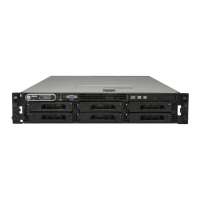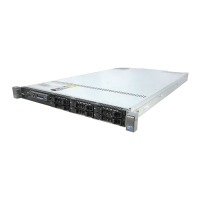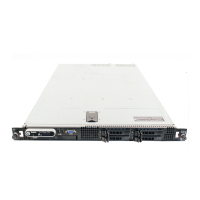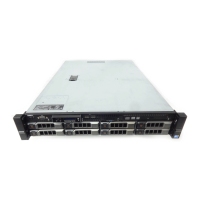12 Dell PowerEdge 4300 Systems User’s Guide
MS-DOS—such as Windows—are able to
put the computer into protected mode.
36
Abbreviation for Personal System/2.
363%
Abbreviation for power-supply paralleling
board.
39&
Abbreviation for polyvinyl chloride.
4,&
Abbreviation for quarter-inch cartridge.
5$,'
Acronym for redundant arrays of indepen-
dent disks. This phrase was introduced by
David Patterson, Garth Gibson, and Randy
Katz at the University of California at Ber-
keley in 1987. The goal of RAID is to use
multiple small, inexpensive disk drives to
provide high storage capacity and perfor-
mance while maintaining or improving the
reliability of the disk subsystem.
Patterson, Gibson, and Katz described
five different methods, which are known
as RAID levels 1 through 5. Each level
uses one or more extra drives to provide
a means of recovering data lost when a
disk fails, so that the effective failure rate
of the whole disk subsystem becomes
very low.
5$,'
RAID 0 is commonly called
striping
. This
was not originally defined as a RAID level
but has since come into popular use. In
this array configuration, data is written
sequentially across the available disks and
no redundancy is provided. RAID 0 config-
urations provide very high performance
but relatively low reliability. RAID 0 is the
best choice when controller cards are du-
plexed. See also striping.
5$,'
RAID 1 is commonly called
mirroring
.
RAID 1 also uses striping, so RAID 1 may
be regarded as the mirroring of RAID 0
configurations. RAID 1 is the best choice
in high-availability applications that require
high performance or relatively low data
capacity. See also mirroring, RAID 10,
striping.
5$,'
RAID 4 is commonly called
guarding
. It
uses data striping, like RAID 0, but adds a
single, dedicated parity drive. The parity
data stored on this drive can be used to
recover data lost from a single failed drive.
RAID 4 configurations write data slowly
because parity data has to be generated
and written to the parity drive, and the
generation of the parity data frequently re-
quires reading data from multiple physical
drives. See also guarding and striping.
5$,'
RAID 5, like RAID 4, is commonly called
guarding
. RAID 5 is identical to RAID 4,
except that the parity data is distributed
evenly across all physical drives instead
of a parity drive. In configurations using a
large number of physical drives in which
a large number of simultaneous small
write operations are being performed,
RAID 5 offers potentially higher perfor-
mance than RAID 4. RAID 4 and RAID 5
configurations are appropriate in
high-availability applications where per-
formance is less critical or where high
data capacity is required. See also
guarding.
5$,'
RAID 10 is a mirroring technique in which
data is duplicated across two identical
RAID 0 arrays or hard-disk drives. All data
on a physical drive in one array is duplicat-
ed, or
mirrored
, on a drive in the second
array. Mirroring offers complete redun-
dancy of data for greater data security.
See also mirroring, RAID 1, and striping.
5$0
Acronym for random-access memory.
The computer’s primary temporary stor-
age area for program instructions and
data. Each location in RAM is identified by
a number called a
memory address
. Any
information stored in RAM is lost when you
turn off your computer.
5$0'$&
Acronym for random-access memory
digital-to-analog converter.
33255bk0.book Page 12 Tuesday, August 25, 1998 8:46 AM

